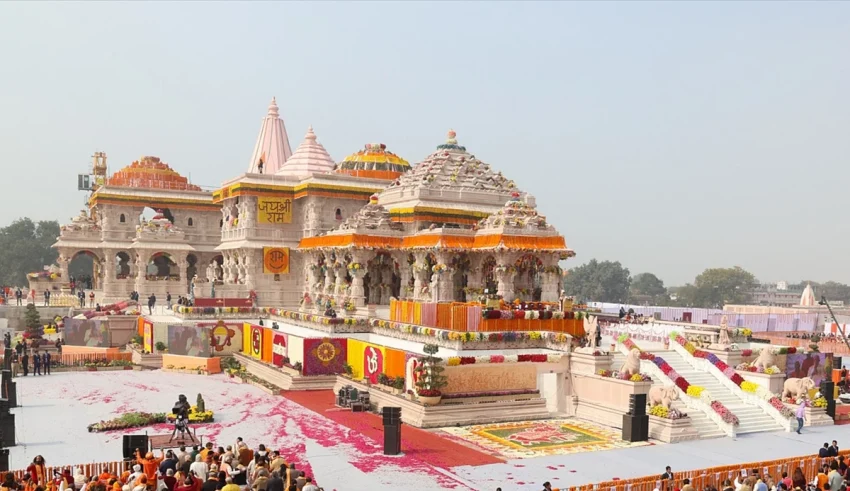Ayodhya, a city immersed in history and spiritual significance, is one of India’s most worshipped destinations. Known as the birthplace of Lord Ram, Ayodhya offers a deep blend of religion, and culture. Whether you are a devout pilgrim, a history enthusiast, or a curious traveler, Ayodhya promises an enriching experience. In this comprehensive Ayodhya Travel Guide, we will explore the city’s historical and cultural significance, top attractions, how to reach Ayodhya, its food and cuisine, and the vibrant fairs and festivals that bring the city to life.
Historical and Cultural Significance | Ayodhya Travel Guide
Ayodhya’s significance in Indian culture and religion is immense. Several ancient texts, including the Ramayana, one of India’s two great epics, mention it. According to Hindu scriptures, Ayodhya is the birthplace of Lord Ram, the seventh avatar of Vishnu. This association has made the city a major pilgrimage site for Hindus around the world.
Historically, Ayodhya has seen various rulers and dynasties, each leaving their mark on the city’s cultural landscape. From the Kosala kingdom mentioned in ancient texts to the Mughal era, Ayodhya’s historical tapestry is rich and varied. Its temples, ghats, and historical monuments reflect the city’s cultural heritage, serving as a treasure trove for history buffs and cultural enthusiasts alike.
Places to Visit in Ayodhya
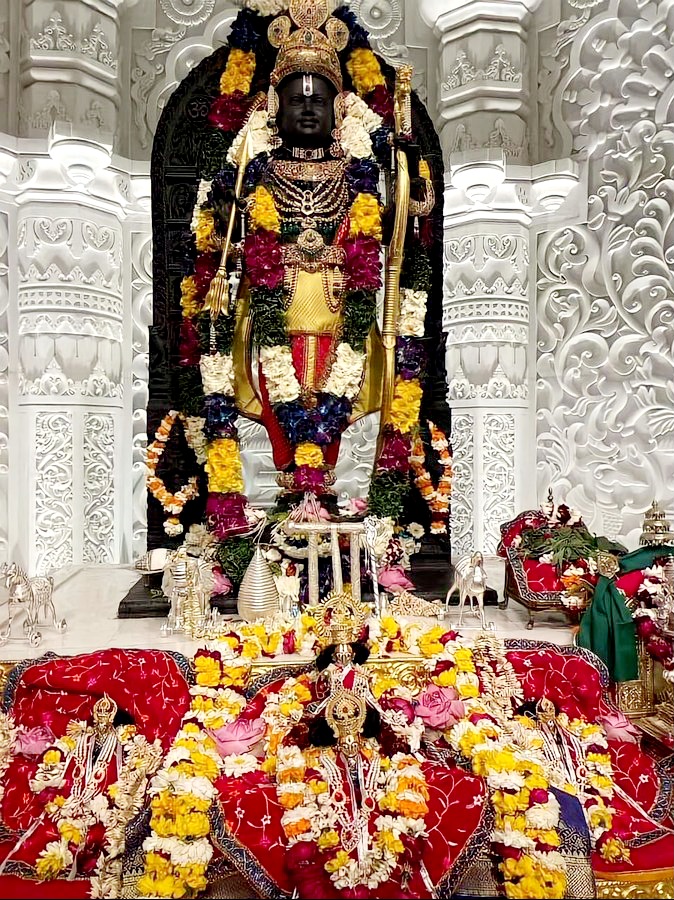
Ayodhya is home to numerous attractions that reflect its rich heritage and religious importance. Here’s a detailed look at the top places to visit:
1. Ram Janmabhoomi
The Ram Janmabhoomi is perhaps the most significant site in Ayodhya. Believed to be the birthplace of Lord Ram, this temple is a focal point for pilgrims and tourists. The temple complex is undergoing significant reconstruction, promising to be a grand representation of Ram’s life and legacy. Visitors can witness the ongoing construction and explore the existing shrines and facilities.
2. Sarayu River Ghats
The serene Sarayu River is another must-visit in Ayodhya. The ghats along the river offer a peaceful retreat and are perfect for a leisurely stroll. Devotees often take a dip in the holy waters, believing it purifies the soul. The evening aarti (prayer) at the ghats is a mesmerizing experience, with chants, lamps, and the serene river setting creating a spiritual ambiance.
3.
Hanuman Garhi is a popular temple dedicated to Lord Hanuman. Located on a hilltop, this temple offers stunning views of the city. People believe that visiting this temple fulfills wishes and provides protection from evil. The temple is always bustling with devotees, and the climb up the stairs is well worth the spiritual reward.
4. Kanak Bhawan
Kanak Bhawan is a temple dedicated to Lord Ram and Sita. Known for its beautiful architecture and intricate carvings, the temple is a visual delight. It is said that this palace was gifted to Sita by Queen Kaikeyi, and the idols of Ram and Sita here are decorated with gold crowns, making it a must-visit for its historical and religious significance.
5. Treta Ke Thakur
Treta Ke Thakur is another significant temple in Ayodhya, where Lord Ram is believed to have performed the Ashwamedha Yajna. The temple houses ancient idols of Ram, Sita, Lakshman, Bharat, and Shatrughna. The historical and religious importance of this temple makes it a must-visit for those exploring the spiritual landscape of Ayodhya.
6. Choti Chhavani
Choti Chhavani is a vibrant area in Ayodhya, known for its bustling streets and numerous small temples. The area is lively and offers a glimpse into the daily life and devotion of the locals. It’s a great place to explore on foot, soak in the spiritual atmosphere, and visit the various temples and shrines dotting the landscape.
7. Nageshwarnath Temple
Dedicated to Lord Shiva, the Nageshwarnath Temple is an ancient temple with a rich history. According to legend, it was built by Kush, the son of Lord Ram. The temple is especially popular during the festival of Shivratri, when devotees flock here to offer their prayers. The temple’s serene environment and historical significance make it a peaceful retreat.
8. Swarg Dwar
Swarg Dwar, meaning Gateway to Heaven, is a significant ghat along the Sarayu River. It is believed that Lord Ram descended to heaven from this spot. The ghat is a serene place for contemplation and offers a peaceful environment for visitors to reflect and connect with the divine.
9. Ram Katha Park
Ram Katha Park is a beautiful park dedicated to the stories of Lord Ram. The park features well-maintained gardens, statues, and sculptures depicting scenes from the Ramayana. It’s an excellent place for families and children to learn about Ram’s life in a relaxed and scenic setting.
10. Gulab Bari
Gulab Bari, meaning ‘Garden of Roses’, is a historic garden and tomb complex built by Nawab Shuja-ud-Daula. The garden features beautiful rose bushes, water fountains, and a tranquil environment. It’s a perfect place to unwind and enjoy the blend of Mughal architecture and natural beauty.
11. Mani Parbat
Mani Parbat is a hillock with historical and religious importance. It is believed to be part of the hill that Hanuman carried to Lanka to save Lakshman. The site offers panoramic views of Ayodhya and is a peaceful spot for meditation and reflection.
How to Reach Ayodhya | Ayodhya Travel Guide
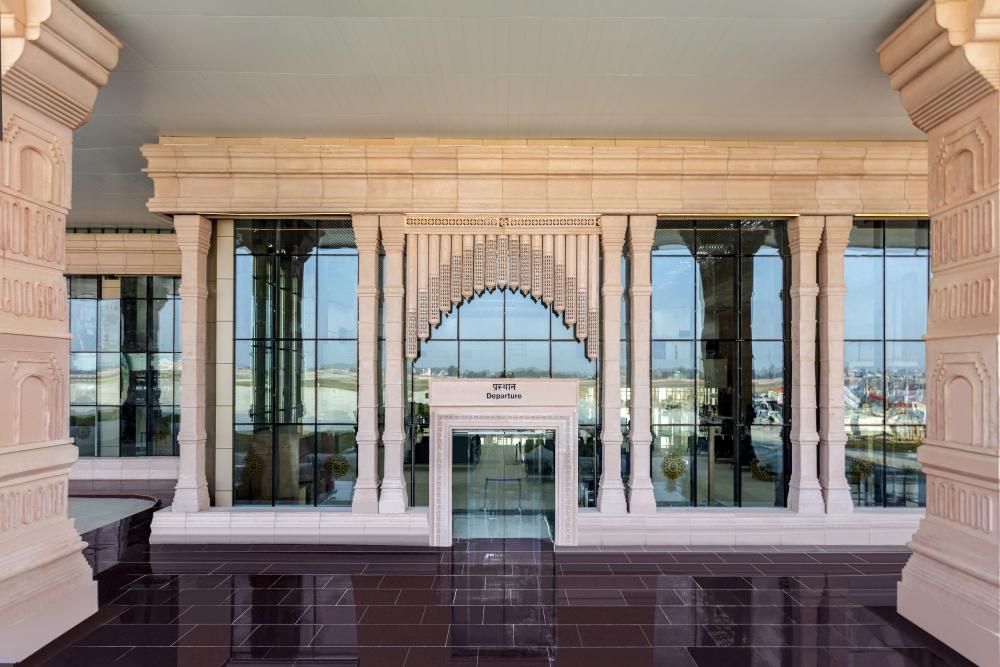
Reaching Ayodhya is convenient, with several options available for travelers:
By Air
The main airport in Ayodhya is Maharishi Valmiki International Airport Ayodhya Dham. And the nearest airport is Chaudhary Charan Singh International Airport in Lucknow, approximately 135 kilometers away. From both the airport, you can hire a taxi or take a bus to reach the temple.
By Train
Ayodhya has its own railway station, Ayodhya Junction, which is well-connected to major cities in India. Alternatively, you can also reach Faizabad Junction, which is about 6 kilometers from Ayodhya, and take a taxi or bus from there.
By Road
Ayodhya is well-connected by road to major cities in Uttar Pradesh and neighboring states. You can drive to Ayodhya or take a bus from cities like Lucknow, Varanasi, and Allahabad. Several state-run and private buses operate regular services to Ayodhya.
Food and Cuisine | Ayodhya Travel Guide
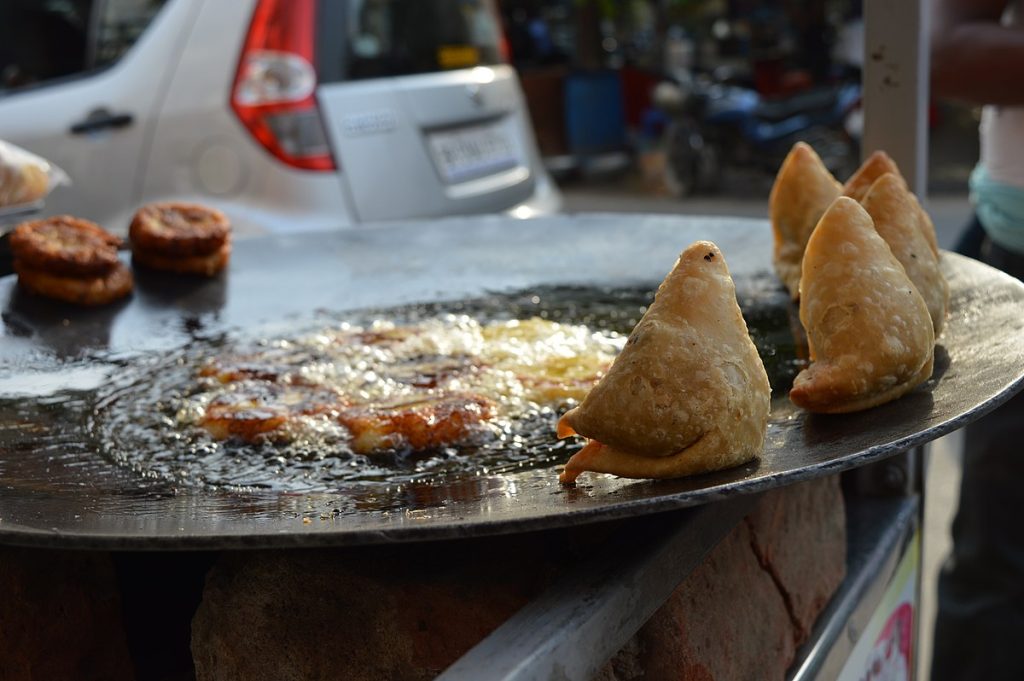
Ayodhya offers a delightful culinary experience with its traditional vegetarian fare and local delicacies. Here’s a look at what you can expect:
1. Traditional Vegetarian Fare
Ayodhya’s cuisine is predominantly vegetarian, influenced by its religious significance. You can find a variety of traditional dishes made with fresh, locally-sourced ingredients. Simple yet flavorful, the food reflects the city’s cultural and spiritual ethos.
2. Chaat and Street Food
Ayodhya is also known for its delicious street food. From tangy chaat to spicy samosas, the city’s street food scene is vibrant and diverse. Make sure to try the local favorites at the bustling markets and street stalls.
3. Sweets and Desserts
Sweets hold a special place in Ayodhya’s cuisine. From mouth-watering jalebis to creamy rabri, the city’s sweet treats are a must-try. Many sweets are prepared with pure ghee, adding to their rich flavor and texture.
4. Local Delicacies
Some of Ayodhya’s local delicacies include kachori, puri-sabzi, and malpua. These dishes are often enjoyed during festivals and special occasions, reflecting the city’s culinary traditions and festive spirit.
5. Ayodhya Ki Thali
A traditional Ayodhya thali offers a complete meal experience with a variety of dishes served on a single platter. It typically includes rice, chapati, dal, sabzi, pickles, and sweets. The thali is a great way to sample the diverse flavors of Ayodhya’s cuisine.
6. Sattvic Food
Given Ayodhya’s spiritual significance, sattvic food is commonly available. This type of food is prepared without onion and garlic, focusing on purity and simplicity. It’s often served in temples and can be found in many local eateries.
Fairs and Festivals | Ayodhya Travel Guide
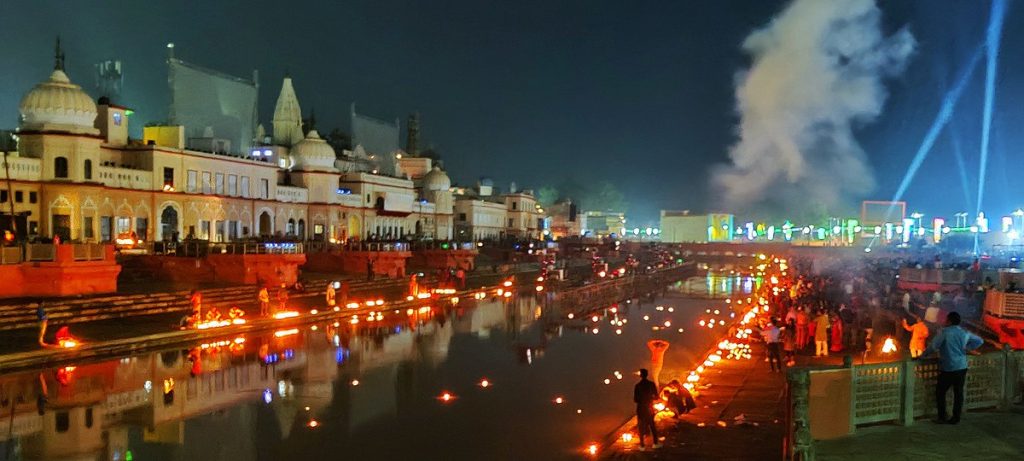
Ayodhya comes alive with vibrant celebrations during its numerous fairs and festivals. Here’s a look at some of the most significant ones:
1. Diwali
Diwali, the festival of lights, is celebrated with great enthusiasm in Ayodhya. The city is beautifully illuminated with lamps and decorations, and various cultural programs and events are organized. It’s a magical time to visit and experience the city’s festive spirit.
2. Ram Navami
Ram Navami, the birthday of Lord Ram, is one of Ayodhya’s most important festivals. Devotees from all over the country gather to celebrate with prayers, processions, and cultural events. Devotion and joy charge the atmosphere.
3. Kartik Purnima
Ayodhya celebrates Kartik Purnima with great enthusiasm. Devotees take a holy dip in the Sarayu River and participate in various religious activities. Beautiful decorations cover the ghats, and the evening aarti becomes a sight to behold.
4. Chaitra Navratri
Devotees dedicate Chaitra Navratri, a nine-day festival, to worshipping the goddess Durga. Ayodhya witnesses a surge in devotees who participate in fasting, prayers, and cultural events. Lights and decorations adorn the city’s temples, creating a festive ambiance.
5. Sharad Purnima
People celebrate Sharad Purnima, also known as Kojagari Purnima, on the full moon night of the Hindu lunar month of Ashwin, dedicating the night to worshipping the moon and goddess Lakshmi. In Ayodhya, they mark it with cultural performances and religious ceremonies.
6. Ayodhya Mahotsav
Ayodhya Mahotsav is a grand cultural festival showcasing the city’s rich heritage. The festival features music, dance, drama, and art exhibitions, attracting artists and performers from across the country. It’s an excellent opportunity to experience the cultural vibrancy of Ayodhya.
7. Vivaha Panchami
Vivaha Panchami celebrates the divine marriage of Lord Ram and Sita. Reenactments of the wedding, processions, and religious ceremonies mark the festival. It’s a unique celebration that offers a glimpse into the city’s religious traditions and customs.
Conclusion
Ayodhya is a city that resonates with history, spirituality, and cultural richness. From its sacred temples and ghats to its vibrant festivals and delicious cuisine, Ayodhya offers a multifaceted experience for every traveler. This Ayodhya Travel Guide aims to provide you with all the information you need to plan an unforgettable trip to this legendary city. Whether you’re here for spiritual solace, historical exploration, or cultural immersion, Ayodhya promises to leave a lasting impression.
FAQs on Ayodhya Travel Guide
Q: What is the best time to visit Ayodhya?
A: The best time to visit Ayodhya is during the cooler months from October to March. This period is ideal for exploring the city’s attractions and participating in its vibrant festivals.
Q: How many days are enough to explore Ayodhya?
A: A 2-3 day trip is sufficient to explore the major attractions of Ayodhya and experience its cultural and spiritual essence.
Q: Is Ayodhya safe for solo travelers?
A: Yes, Ayodhya is generally safe for solo travelers. However, it’s always advisable to take common safety precautions and respect local customs and traditions.
Q: Can I find accommodation easily in Ayodhya?
A: Yes, Ayodhya offers a range of accommodation options, from budget hotels to mid-range and luxury stays. We recommend booking in advance, especially during peak seasons and festivals.
Q: Are there any local markets for shopping in Ayodhya?
A: Yes, Ayodhya has several local markets where you can shop for souvenirs, religious items, and local handicrafts. The markets are bustling with activity and offer a glimpse into the local culture.
Q: What should I wear when visiting temples in Ayodhya?
A: When visiting temples in Ayodhya, it’s best to dress modestly and respectfully. We recommend traditional Indian attire or simple, comfortable clothing that covers the shoulders and knees.
If you enjoyed exploring the spiritual and historical treasures of Ayodhya, be sure to check out my detailed guide on the Top 10 Sacred Pilgrimage Sites in Uttarakhand. This blog post offers insights into Uttarakhand’s most worshipped pilgrimage destinations, providing you with essential tips and highlights for your next spiritual journey. Don’t miss out on discovering these enchanting sites!
